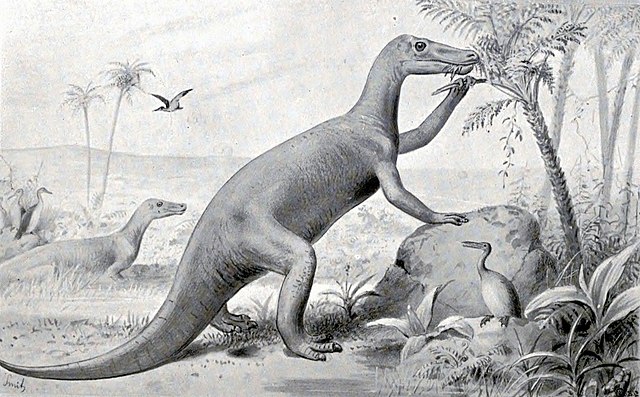
Off the coast of West Africa, a potential asteroid impact crater has been found, providing new insights into the extinction of the dinosaurs.
Uisdean Nicholson, a geologist at Heriot Watt University in the UK, and his team began poring over seismic data from Africa’s West Coast. The goal, Nicholson told Live Science was to investigate the tectonic forces that tore South America and Africa apart one hundred million years ago.
The seismic data were collected by sending vibrations from a trawling ship towards the seafloor and recording the waves that bounced back. The result was a series of squiggles that depicted the structure of the subsurface. Surprisingly, the researchers also discovered evidence of an unusual divot in the rock layers on the seafloor about 250 miles (400 kilometers) from the coasts of Guinea and Guinea-Bissau.
Nicholson said, “The crater is very striking, and unlike anything that I had ever seen before.”
According to Nicholson and his team, the crater was about 66 million years old, which is roughly the same age as the impact that caused the Chicxulub crater off the present-day Yucatán Peninsula and put an end to the dinosaur era. A roughly 6.2-mile-diameter asteroid 25 times larger than the one that most likely impacted off the coast of West Africa formed Chicxulub. The time frames’ resemblance prompts speculation about their possible relationship.
More about the asteroid that wiped out the dinosaurs
The Chicxulub and Nadir craters might, however, be related in a few different ways. According to Nicholson, the asteroid that wiped out the dinosaurs may have fragmented close to Earth and may have struck the globe in several waves, each lasting several hours or days.
Alternatively, the two space rocks might have come from the same parent asteroid that fragmented in the asteroid belt and bombarded Earth with a series of hits over a million or two million years.
University of New Mexico research professor of earth and planetary sciences Mark Boslough also agreed that it was most likely the result of an asteroid although he was not a part of the research himself.
Boslough said that “the discovery of a terrestrial impact crater is always significant because they are very rare in the geologic record. There are fewer than 200 confirmed impact structures on Earth and quite a few likely candidates that haven’t yet been unequivocally confirmed.”
There may still be very small asteroid debris in the crater. According to Nicholson, he and his team have filed a drilling proposal with the International Ocean Discovery Program; however, even if the project is accepted and funded, it won’t take place until at least 2024 or 2025.
Drilling underwater is challenging and expensive. After the Chicxulub impact site was discovered in 1991, it took ten years for scientists to begin marine drilling there, and only two drilling missions have taken place in the last thirty years.
See all the latest news from Greece and the world at Greekreporter.com. Contact our newsroom to report an update or send your story, photos and videos. Follow GR on Google News and subscribe here to our daily email!



